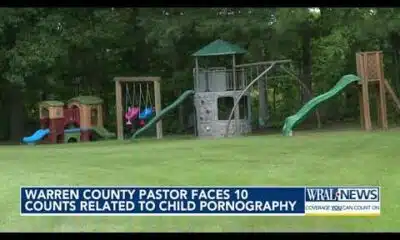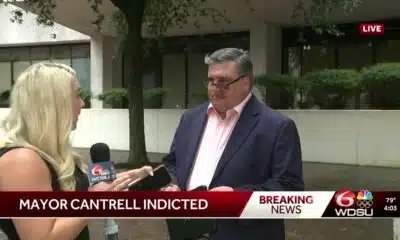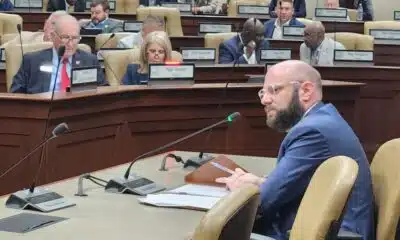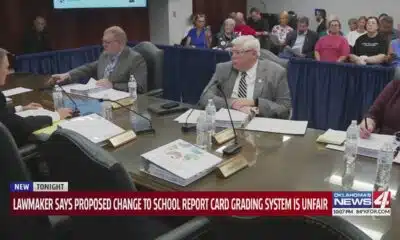News from the South - West Virginia News Feed
‘They don’t care:’ Advocates for miners with black lung worry as silica dust rule delayed again
by Caity Coyne, West Virginia Watch
August 14, 2025
A federal rule to limit coal miners’ exposure to dangerous silica dust — which was set to go into effect next week after already being delayed for months — is expected to be further postponed following a joint status update filed in federal court this week.
Now, the rule’s implementation will be pushed until at least October, according to the court filing.
Silica dust exposure is a significant driver of black lung disease among coal miners.
The silica dust rule was initially finalized last spring and was meant to go into effect for coal mines in April 2025. But that didn’t happen.
That month, several industry groups filed a request with the federal 8th U.S. Circuit Court of Appeals to block the rule’s implementation, citing the high costs for mine operators to comply and challenges posed by turnover within the Trump administration.
A federal judge granted an emergency stay to postpone the rule until August.
According to the joint status report filed this week, the parties in the case — led by the National Sand, Stone and Gravel Association against the federal Department of Labor and the Mine Safety and Health Administration — “are still discussing potential settlement of the petitions, and those discussions are ongoing.”
The implementation will be suspended until at least Oct. 17, with another status update scheduled on Oct. 10. MSHA, according to its website, has yet to publicly alert stakeholders of this second postponement. Representatives for MSHA could not be reached for comment.
The finalized rule would be the first of its kind for silica dust in mines, despite evidence existing for decades showing the dangers of exposure and other industries already enforcing exposure limits due to these risks.
It would cut silica dust exposure limits in half for miners and implement new action levels when a certain amount of silica dust is present in mines. It would also require mine operators and companies to offer free medical monitoring for their workers with the hope of detecting black lung and other respiratory diseases earlier.
‘The wind is out of my sails:’ Advocates frustrated, discouraged over pushback on rule
The further delay of the rule is a serious concern for advocates and others who work with people diagnosed with black lung.
Lisa Emery, director of the New River Health Breathing Center and Black Lung Clinic, has worked on black lung as a registered respiratory therapist in Southern West Virginia for nearly 10 years. This summer, Emery was selected to serve as the chair for the National Coalition of Black Lung and Respiratory Disease Clinics.
When the silica dust rule was first finalized last year, Emery said it felt like “finishing a marathon.” So much work and time had gone into developing the rule — from miners, from care providers, from researchers and more over several years. Seeing it finalized and actually about to go into effect was a relief, Emery said.
“We were crossing that finish line. We had so much hope and this was one of the biggest steps toward improving coal miners’ health that we could have hoped for,” Emery said. “It needed to happen and it did. We were just so excited for it.”
But now, as the government continues to delay implementation and the courts consider reviewing the rule, Emery said it’s hard not to feel discouraged.
“Now, I feel like the wind is out of my sails,” Emery said. “We were crossing a finish line, we were about to win the race, right? And in that last stretch, the wind is just totally out of our sails. It’s hard not to be upset about that.”
Gary Hairston, president of the National Black Lung Association, said the disappointments from elected officials and the government generally are becoming more difficult to bear.
A miner for 30 years, Hairston was diagnosed with black lung in his late 40s.
He kept working underground even after the spot on his lung was found by doctors. One day, running up the stairs to avoid rain at his mine, he ran out of breath so severely he thought he was going to die. Soon after, he fell ill with pneumonia.
“For almost a year, I was in and out of the hospital every week, back and forth,” Hairston said. “When I got better, everything had changed. I tried to go back to work, but the [doctor] told me I wouldn’t get better — I’d need oxygen all the time, it was going to only get worse.”
There is no cure for black lung disease. The best way to prevent it from developing into a more complicated form is to limit exposure to silica dust.
Hairston has now been retired from coal mines for almost two decades. Over that time, he’s transitioned from working for mine operators to working for coal miners, advocating wherever and whenever possible for better protections and services for people with and at risk of developing black lung.
Hairston said he used to have faith that the political system — or at least representatives within it — wanted to help coal miners like him.
Now, though, that faith is becoming harder and harder to keep, Hairston said.
“The [people] at the agency meant to protect us [MSHA] are the same ones who [historically] served coal companies,” Hairston said. “How do you trust that, have faith in that? How can you think that’s someone who wants us safe and healthy?”
James McHugh, the deputy assistant secretary for MSHA, was formerly an attorney with the Charleston-based Pence Law Firm PLLC, where coal companies were often clients, according to the Charleston Gazette-Mail.
He also served as an executive at an industrial trade group that filed formal comments against the silica dust rule, namely its strengthened exposure limits and new penalty provisions for mine operators that fail to comply, while MSHA was drafting it in 2023.
Last month, seven of the 21 Republican members of the U.S. House Committee on Education and Workforce sent a letter to McHugh at MSHA asking him to consider amending the silica dust rule as it “places undue and excessive burdens on the mining industry.”
They said doing so would be appropriate given the Trump Administration’s focus on industry deregulation and — while noting nothing about the health risks and outcomes of black lung disease — said the rule “excludes commonsense practices” like rotating shifts in dustier parts of mines and enforcing the use of respirators in areas with high dust.
Emery said such protections aren’t exactly practical; something shared numerous times by leading respiratory experts in public comments given to MSHA during the creation of the silica dust rule.
Rotating shifts, for example, would mean exposing even more miners to silica dust over time. Those who work in other parts of the mine without dust would have to then be in dustier parts, increasing their exposure, and workers would need to be trained on numerous jobs instead of focusing on the ones they are best equipped to do.
And for respirators to work adequately, miners would have to get a proper fit test to ensure their efficacy. Anyone with a beard would not have an adequate fit and someone would need to be responsible for enforcing their use — which could potentially interfere with communication critical to protecting safety and performing jobs while workers are underground in a loud environment.
Emery also said she’s assessed miners with black lung who have used respirators while underground.
“Their scans still came up positive,” Emery said.
For Hairston, the lack of urgency expressed not only by MSHA but also elected officials who he feels should prioritize miners’ safety is disconcerting. Miners, he said, are the only ones who make coal mining and the economic and energy benefits that politicians say come with it possible.
“None of these things they want to happen work without miners and they just use us and use us as props,” Hairston said. “They say they want more coal, want more workers, want more mines — they promise it [in] their campaigns. Well, who are those workers going to be? We only hear them talk about us when the elections come around. They don’t care about the coal miners, only the coal mines. When does that end?”
Protecting the next generation and learning from the toll put on the past
Today, Hairston is facing a difficult decision: whether to commit to using an oxygen tank full time in order to maintain his breathing.
He currently uses oxygen while sleeping. Sometimes throughout the day, especially if doing laborious activities, he’ll use it as needed.
“It’s hard for me to think about being tied to that thing all the time; It’ll completely change my life again,” Hairston said. “I’m still very active — as much as I can be. That’s a big change to how I can move and what I can do if I’ve got to pull around a tank with me everywhere I go.”
It’s a balancing act, Hairston said, to decide when he’s hit his limit. He knows he’s living with a lifelong condition and 24/7 oxygen will be inevitable one day. He’s just not ready to accept that today is that day.
He wants to see younger miners — those just entering the industry or who will in coming years — not be faced with the same inevitability.
But the more time that goes by without regulation on exposure to silica dust means more miners will develop the disease early, Emery said.
More than 40% of the black lung screenings done at her clinic last year came up positive for the disease.
“If you think about the numbers that we’re seeing right now, we haven’t peaked,” Emery said. “Even if [the silica dust rule] gets implemented tomorrow, there’s still going to have to be massive changes.”
The Centers for Disease Control and Prevention estimates that about 20% of coal miners in Central Appalachia are suffering from black lung — the highest rate detected in more than 25 years. One in 20 of the region’s coal miners are living with the most severe form of the condition.
Emery sees firsthand what a diagnosis can do to people. In the worst cases, it means lives are cut short. In cases caught earlier, the diagnosis still can mean lifestyle changes and adjustments that can be hard for many to accept.
In her office in Oak Hill, West Virginia, she said a regular part of her job is delivering this kind of bad news. She sits and consoles miners — and their families — who are struggling to come to terms with having the disease.
Through tears, she said it never quite gets easier hearing people talk about the parts of their lives that are being robbed from them by black lung and the complications that come with it.
In recent years, these conversations have become more frequent with younger miners. It’s not just grandparents struggling to keep up with young grandchildren anymore; it’s fathers in their 40s and 50s unable to play with their own children, keep up on family vacations or participate in activities their healthy peers enjoy — playing sports, yardwork, home projects.
Miners across Appalachia are being diagnosed with black lung at younger ages than their predecessors due to a lack of easily accessible coal. Now, they must dig through more silica-rich sandstone to reach the coal that remains.
“This is not just your grandfather’s disease anymore,” Emery said. “It’s your husband’s disease, it’s your brother’s disease, it’s your son’s disease right now, and it’s affecting all of them.”
As time goes on, the consequences of this will grow.
That’s what is so critical about the silica dust rule, Emery said. It’s already too late to protect many of the miners who are working underground now, but the future generations and those recently entering the industry could be saved from developing black lung.
“When the rule is in effect, it will take a while but we will start to see the trail off of disease,” Emery said. “But it is going to take a while to start seeing true change from a newer generation of coal miners coming in. That’s the immediacy here.”
Knowing there is something that could be done to stop this disease from impacting younger generations in the same way as their predecessors is frustrating, Emery said.
At 48 years old — the same age Hairston was when he was first diagnosed with black lung disease — she foresees many more years in the respiratory health field. Already, she’s seen so many changes occur; miners are more likely to get screened now than in the past, stigma is slowly dissipating over receiving such screenings and, when they do come back positive, there’s more of a willingness for miners to practice their Part 90 rights to transfer to a different, less dusty part of a mine to protect themselves.
But still, she sees so much more that could be done if the willingness to do so existed.
She hopes that, when the time comes for her to retire, she’s treating people in a different environment. One where there’s widespread acceptance and recognition of the importance of preventing black lung and what the costs are if it isn’t stopped.
“I’m hoping by the time I retire, that I’m not giving as much bad news in my line of work, that’s what I wish for,” Emery said. “I love the work I do, I know I’m helping this community and I want to do that as long as I can — I will do that. I want to see us trend in the right direction instead of the wrong direction. We know it’s possible.”
YOU MAKE OUR WORK POSSIBLE.
West Virginia Watch is part of States Newsroom, a nonprofit news network supported by grants and a coalition of donors as a 501c(3) public charity. West Virginia Watch maintains editorial independence. Contact Editor Leann Ray for questions: info@westvirginiawatch.com.
The post ‘They don’t care:’ Advocates for miners with black lung worry as silica dust rule delayed again appeared first on westvirginiawatch.com
Note: The following A.I. based commentary is not part of the original article, reproduced above, but is offered in the hopes that it will promote greater media literacy and critical thinking, by making any potential bias more visible to the reader –Staff Editor.
Political Bias Rating: Center-Left
This article emphasizes the health and safety concerns of coal miners regarding silica dust exposure and criticizes the delay of federal regulations aimed at protecting workers, a stance typically associated with progressive or labor-focused perspectives. It highlights the struggles of workers and advocates for stronger governmental intervention and regulation, expressing skepticism about regulatory agencies’ allegiance to industry interests, which aligns with center-left viewpoints promoting labor rights and environmental health. However, it presents facts and includes some industry and political opposition perspectives, maintaining a relatively balanced tone without extreme partisanship.
News from the South - West Virginia News Feed
Man sentenced to home confinement for deadly DUI crash
SUMMARY: Ryan Jones appeared in Kanawha County court for sentencing after pleading guilty to a DUI crash that killed Dustin Myers in 2023. The crash occurred in Sissonville when Jones was driving a truck that went off the road and hit a tree. Myers, a passenger in the truck, died as a result. Jones’s lawyer stated that he has taken full responsibility for the crash. Jones was sentenced to home confinement for the deadly DUI crash. Deputies have identified Dustin Myers as the man killed in the accident during the court proceedings.
A man who pleaded guilty to a DUI-related crash that killed a man in October 2023 was sentenced Friday to three to 15 years of home confinement.
For more Local News from WSAZ: https://www.wsaz.com/
For more YouTube Content: https://www.youtube.com/channel/UCrcuU0JXXy8oIBqEB13mrwA
News from the South - West Virginia News Feed
Trump’s DEI ban in K-12 schools, higher ed ruled ‘unlawful’ by federal judge
by Shauneen Miranda, West Virginia Watch
August 15, 2025
WASHINGTON — A federal judge in Maryland has struck down the U.S. Education Department’s attempts to do away with diversity, equity and inclusion practices in schools.
The Thursday ruling marks a blow to President Donald Trump’s administration as it continues to take significant strides to try to crack down on DEI efforts across the federal government.
U.S. District Judge Stephanie A. Gallagher found both an agency Dear Colleague letter threatening to yank federal funds for schools from K-12 through colleges and universities that use race-conscious practices in aspects of student life and a memo ordering state education leaders to certify compliance to be “unlawful,” vacating the two.
Gallagher’s ruling follows a lawsuit from the American Federation of Teachers union and its affiliate, AFT-Maryland, as well as the American Sociological Association and a public school district in Oregon.
She noted that both the letter and certification requirement are “unconstitutionally vague.”
Gallagher is one of three federal judges who blocked different parts of the agency’s initiatives back in April, which brought enforcement of the letter and the memo on certifying compliance to a halt.
“The administration is entitled to express its viewpoints and to promulgate policies aligned with those viewpoints,” wrote Gallagher, who was appointed by Trump. “But it must do so within the procedural bounds Congress has outlined. And it may not do so at the expense of constitutional rights.”
Feb. 14 letter to states
The department drew swift legal action after sending a Feb. 14 letter to school districts that threatened to rescind federal funds for schools that use race-conscious practices in programming, admissions, scholarships and other aspects of student life.
The letter gave a sweeping interpretation of a U.S. Supreme Court ruling in 2023, which struck down the use of affirmative action in college admissions.
The four-page letter raised a myriad of questions for schools over what exactly fell within the requirements. The department in March issued a Frequently Asked Questions document on the letter in an attempt to provide more guidance.
Adding fuel to the fire, the department in April gave state education leaders just days to certify all K-12 schools in their states were complying with the letter in order to keep receiving federal financial assistance.
Reaction from department, union
“While the Department is disappointed in the judge’s ruling, judicial action enjoining or setting aside this guidance has not stopped our ability to enforce Title VI protections for students at an unprecedented level,” a spokesperson for the department said in a statement shared with States Newsroom on Friday.
“The Department remains committed to its responsibility to uphold students’ anti-discrimination protections under the law,” the spokesperson added.
Randi Weingarten, president of the American Federation of Teachers, said “the court agreed that this vague and clearly unconstitutional requirement is a grave attack on students, our profession, honest history, and knowledge itself,” in a Thursday statement.
Weingarten added that “it would hamper efforts to extend access to education, and dash the promise of equal opportunity for all, a central tenet of the United States since its founding.”
West Virginia Watch is part of States Newsroom, a nonprofit news network supported by grants and a coalition of donors as a 501c(3) public charity. West Virginia Watch maintains editorial independence. Contact Editor Leann Ray for questions: info@westvirginiawatch.com.
The post Trump’s DEI ban in K-12 schools, higher ed ruled ‘unlawful’ by federal judge appeared first on westvirginiawatch.com
Note: The following A.I. based commentary is not part of the original article, reproduced above, but is offered in the hopes that it will promote greater media literacy and critical thinking, by making any potential bias more visible to the reader –Staff Editor.
Political Bias Rating: Center-Left
This content presents a perspective that is generally supportive of diversity, equity, and inclusion (DEI) initiatives and critical of efforts by the Trump administration to restrict these practices. The article highlights a federal judge’s ruling against the Education Department’s attempts to curtail DEI efforts, framing the ruling as a protection of constitutional rights and anti-discrimination protections. The inclusion of statements from education unions and emphasis on the potential negative impact of the administration’s policies on equal opportunity further indicate a center-left leaning, as it favors progressive educational policies and critiques conservative regulatory actions.
News from the South - West Virginia News Feed
Jay's Evening Weather for Thursday 08/14/25
SUMMARY: Jay’s Evening Weather for Thursday 08/14/25 reports pleasant conditions across southern West Virginia with temperatures in the upper 70s to mid-80s, accompanied by sunshine and light northwest winds. Traffic is moving steadily, though Lewisburg is congested due to fairgrounds activity. Doppler radar shows fading showers exiting west Virginia, while heavier storms persist southeast, including South Central Virginia and the Outer Banks of North Carolina. The weekend forecast predicts mostly dry weather with a slight chance of showers in higher elevations Friday and Saturday. Temperatures will rise into the mid to upper 80s before a cooler, wetter front arrives early next week.
The showers are gone, and patchy fog will be the main travel concern tonight and tomorrow morning.
FOR ALL THE LATEST, BE SURE TO FOLLOW US ON FACEBOOK AND TWITTER:
https://facebook.com/WOAYNewsWatch
https://twitter.com/WOAYNewsWatch
-
News from the South - Oklahoma News Feed6 days ago
Former payroll director ordered to prison, must repay district nearly $500,000
-
News from the South - Tennessee News Feed6 days ago
Dollywood shares hints about new attraction coming in 2026
-
News from the South - Georgia News Feed6 days ago
GBI identifies Emory University, CDC shooting suspect
-
News from the South - Louisiana News Feed7 days ago
Rural emergency rooms are increasingly run without doctors, experts say
-
News from the South - Missouri News Feed7 days ago
Police found a man stabbed to death in St. Louis. They arrested his stepson in Minnesota a day later
-
News from the South - Georgia News Feed6 days ago
Patrick Joseph White: Who is the accused Emory and CDC shooter?
-
News from the South - South Carolina News Feed7 days ago
Governor to set limits on SNAP benefits.
-
News from the South - Oklahoma News Feed7 days ago
Lawmaker says proposed change to school report card grading system is unfair










































